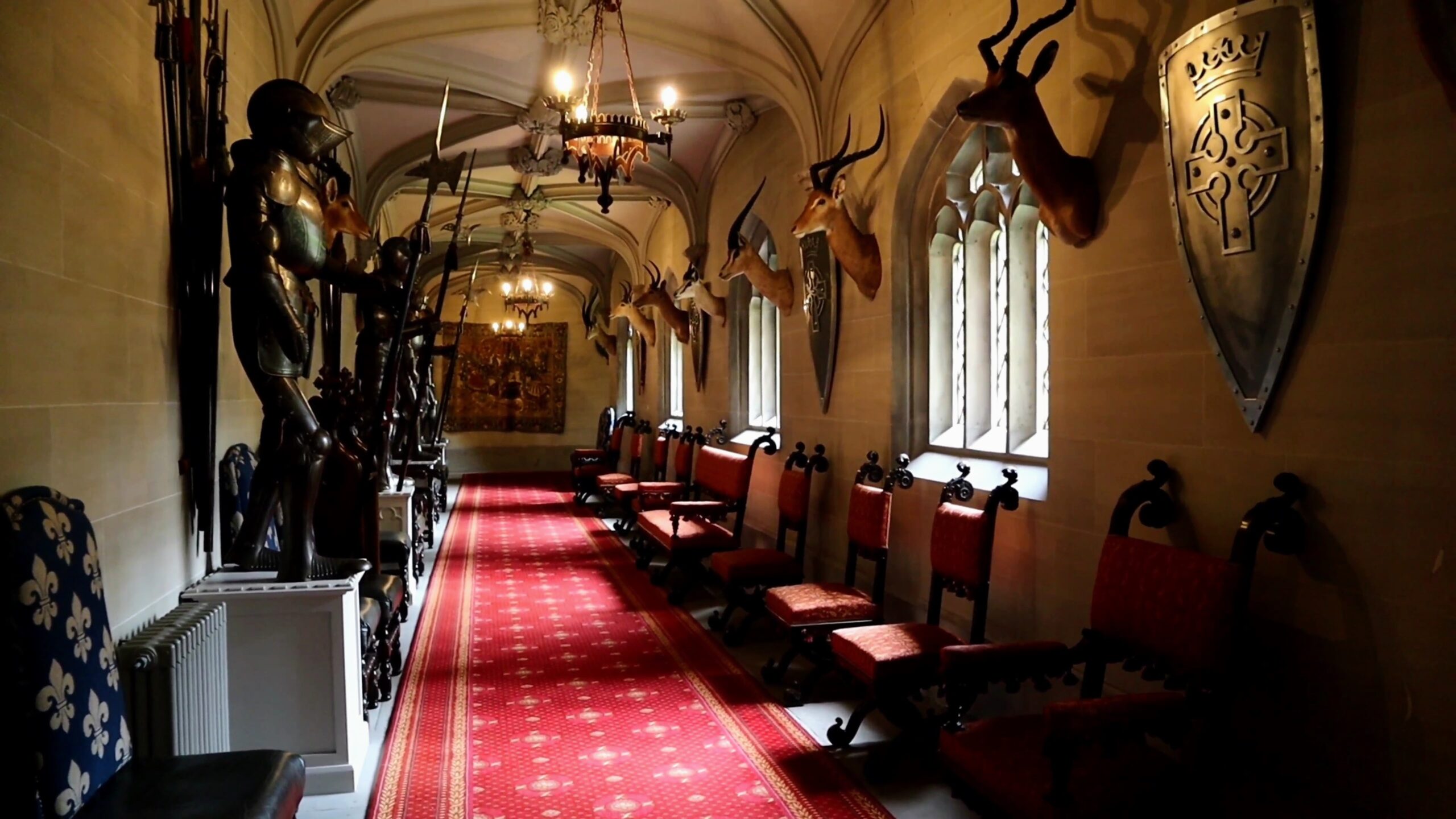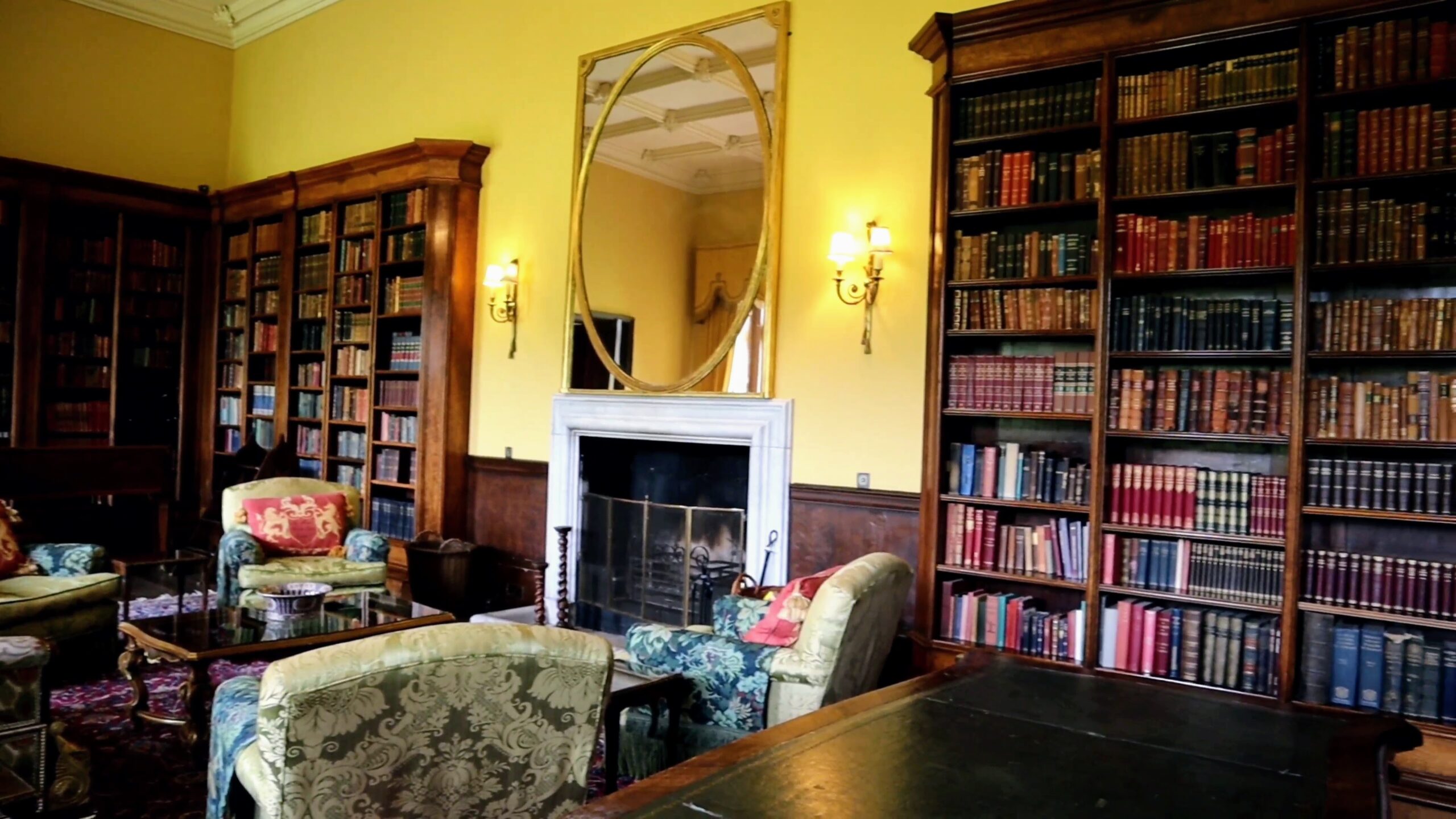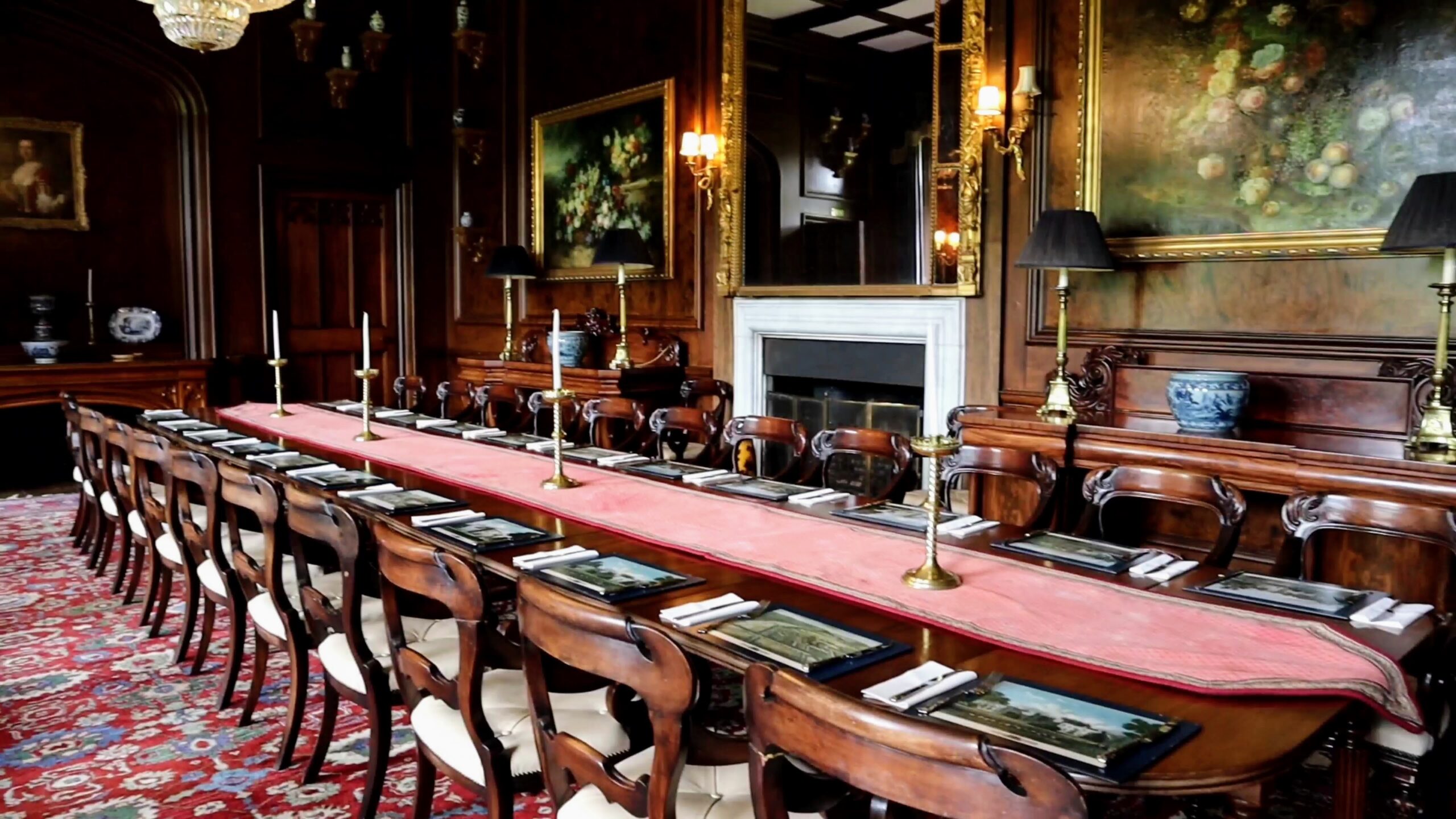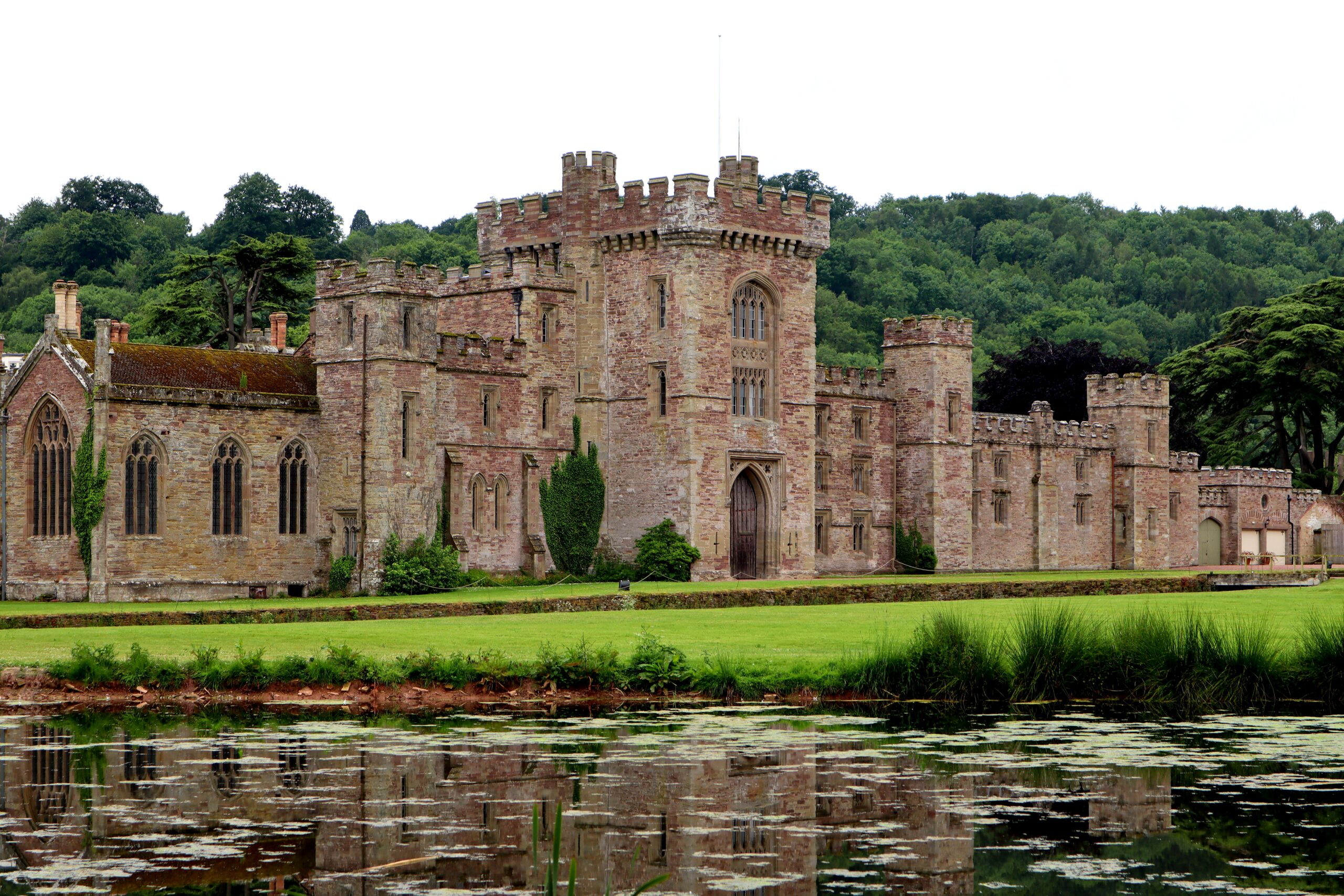Hampton Court Castle in Herefordshire dates back to the 15th Century and was first built by Sir Rowland Lenthall. The castle has had a number of transformations over the centuries and is now fully restored.
| Built | 15th Century |
| Type | Medieval Castle |
| Condition | Intact (Renovated) |
| Ownership | Private |
| Access | Public – Fee (tours only). Wedding Venue. |
Click here to watch our tour of Hampton Court Castle and discover it’s history
Hampton Court Castle Estate was created when two smaller manors merged, Hampton Richard and Hampton Mappenor. Hampton Court Castle in Herefordshire was first built in 1427 and is frequently confused with Hampton Court Palace near London, which was built almost 100 years after Hampton Court Castle.
Henry IV began construction at Hampton Court Castle but gifted the estate to Sir Rowland Lenthall when he married Margaret Fitzalan, Margaret was his cousin and the daughter of the Earl of Arundel.
Sir Rowland Lenthall was a royal favourite having fought for Henry at the Battle of Agincourt in 1415. The Battle of Agincourt also helped Rowland to raise the funds necessary to build his grand home, at the battle Rowland managed to round up quite a few wealthy French prisoners who he brought home and only returned them once a ransom had been paid for each prisoner. Hampton Court Castle did not begin as a castle when Sir Rowland Lenthall built a quadrangular manor house in 1427 but after moving in he found he was having problems with the Welsh coming over the border and needed to make the property more secure. Twelve years later, in 1434 Henry VI 6 granted Sir Rowland a licence to crenellate and so it was transformed into a castle.


In 1510, Sir Rowland’s grandson sold Hampton Court Castle to Sir Humphrey Coningsby. In the 17th Century when Mary II and William III took the throne the current Lord Coningsby was a key supporter and to display his support he added ‘Court’ to the castle’s name, in honour of Hampton Court Palace near London. It was during this period that Dutch-style gardens and canals were added to the grounds in order to keep up with the current trend set by King William III and Queen Mary II.
The castle remained in the hands of the Coningsby family until 1810 when they sold it to Richard Arkwright, the son of the famous inventor of the same name. Richard’s son, John Arkwright set about completely remodelling the castle in the 1830’s and 1840’s. He brought in Charles Hanbury Tracy, later Lord Sudeley, who redesigned the castle using the early Victorian Gothic Style and transformed it into much more of a family home as John and his wife had 12 children to accommodate. They hoped the work would be completed in around 3 years but it actually took 12 years. In 1848 an ornate conservatory was also added, which is now used as a cafe.


The Arkwright family sold Hampton Court Castle in 1912, by now the family’s fortunes were gone and the castle had begun to fall into disrepair.
Between 1924 and 1972 the estate was the seat of Lord Hereford (17th Viscount) who resided at the castle. Shortly after moving in he sold the chapel’s stained glass windows and when the ceiling of the chapel leaked he left it unrepaired until it eventually crashed to the floor. In the 20th century much of the original furniture was also sadly sold off.
In the 1990’s the castle was bought by an American millionaire, Robert Van Kampen, he spent five minutes looking around the castle and instantly fell in love with it and bought it. He paid 11 million buying the castle and a further 12 million restoring the castle and gardens to their former glory but also left his own mark on the castle with some of his interesting furnishings and decorations that he added.
Robert sadly dies just before he and his family were due to move into the castle and the castle was bought by another family who now run the castle as a wedding venue, hotel and visitor attraction.


The castle was fascinating but the gardens were spectacular. Within Victorian garden walls you find distinct garden areas and water features that are separated by canals, islands and avenues of pleached trees.
Click below to view our video exploring Hampton Court Castle and listen to the castle’s history


Your idea simply excellent
Thank you, I’m happy to hear that you enjoyed the article
Many thanks for the help in this question. I did not know it.
Your idea is very good
Thank you, we love researching and sharing our knowledge